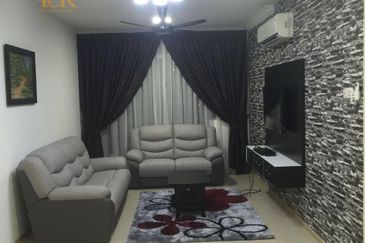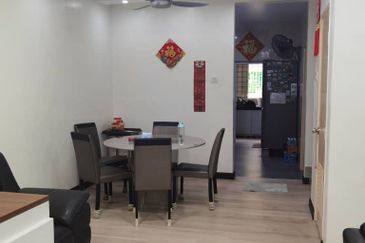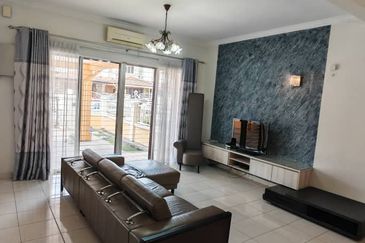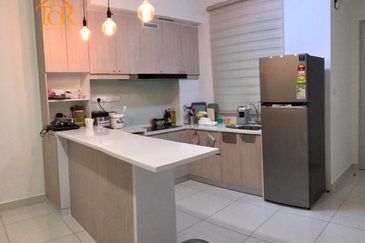KUALA LUMPUR (Sept 21): Nexgram Holdings Bhd’s RM47 million consultation fee, a sum that will grow as the company’s two property development projects in Dengkil and Cyberjaya progress, is justifiable, said its group executive director Alan How.
How noted that the consultant’s fee for a property development project is usually in the range of 8% to 12%. Based on estimated total construction costs of RM906 million, Nexgram’s consultation fee could increase to as high as RM108 million.
According to him, the consultation fee of RM47 million so far is reasonable simply because Nexgram needed consultants to advice on the possible developments that Nexgram could undertake on the tracts of land.
“We had three proposals [presented to Nexgram] from the consultants. And we decided on the third one since MyAngkasa [Bina Sdn Bhd] is keen on buying the developments. All these proposals cost us money,” he told digitaledge Daily.
To recap, MyAngkasa, a subsidiary of Angkatan Koperasi Kebangsaan Malaysia Bhd, in December last year entered into an off-take agreement-cum-sale and purchase agreement with Nexgram’s subsidiaries for the two development projects.
The company’s property development projects have a combined gross development value of RM1.44 billion. How said Nexgram is in the midst of obtaining bridging loans and he expects construction works to start in the first quarter next year.
How said the two property development projects would give a big boost to Nexgram’s earnings in the future.
Nexgram’s RM47 million consultation fee came in the limelight as the amount has appeared to be rather big compared with other players in the property sector. Some property developers cited the rule of thumb to be about 5% of development costs.
Furthermore, the consultation fee is recorded in Nexgram’s balance sheet as inventories — a move that has prompted many to wonder since property players usually book in the sum as work in progress.
Nexgram’s inventories ballooned to RM89.8 million for the financial year ended April 30, 2015 (FY15), according to the company’s audited annual report, compared with zero value a year ago.
The lump sum of RM89.8 million inventories is inclusive of land cost of RM19.5 million and development cost of RM64.8 million. Meanwhile, the development cost consists of project management expenses of RM23.3 million and project study and surveyor expenses of RM23.7 million — both of which are categorised as consultation fee.
Nexgram’s cash pile has contracted to RM34.3 million as at April 30, 2015, from RM85.1 million a year ago. It posted a net profit of RM6.94 million for FY15, compared with RM14.27 million the year before. Revenue stood at RM134.3 million versus RM102 million in FY14.
On the accounting treatment, How explained that the amount was recorded as part of the company’s inventories because Nexgram has adopted Malaysian Financial Reporting Standard (MFRS) as its accounting standard while others have adopted Financial Reporting Standard (FRS).
How said Nexgram is one of the very few firms in the property industry that adopts MFRS.
“Under the FRS framework, property developers are required to capitalise cost incurred in relation to property development activities as ‘property expenditure’. Only the unsold completed property units are classified as inventories,” he explained.
“However, MFRS has Interpretation Committee Interpretation 5 (IC15): Agreements for the Construction of Real Estate,” said How. Under IC15, he noted that agreement for the construction of a real estate meets the definition of sales of goods.
“Hence, sale of property under the project would be accounted for as revenue from sales of goods under MFRS 118: Revenue Recognition. Consequently, property development cost would be accounted for as ‘Inventories’ under MFRS 102,” he added.
Regarding the adoption of MFRS during 2012, he said Nexgram’s migration from FRS was on the advice of its previous external auditor SJ Grant Thornton. “Once we converged into MFRS, we are not allowed to move back to FRS,” How said.
Other than the development cost, How conceded that the group is still discussing with its current auditor CHI-LLTC on the revenue recognition for the two property projects. Under MFRS, when real estate is being treated as sale of goods, revenue would only be recognised when the buyer takes control of the property, which is upon completion of the project.
This could be different from other property developers, who adopt FRS, which recognise their revenue progressively according to pace of the construction works of the particular project.
This article first appeared in the digitaledge DAILY on Sept 21, 2015. Subscribe here.
TOP PICKS BY EDGEPROP

Vista Alam Serviced Apartment
Shah Alam, Selangor

Setia City Residences @ Setia City
Setia Alam/Alam Nusantara, Selangor

Setia City Residences @ Setia City
Setia Alam/Alam Nusantara, Selangor

Bandar Botanic
Bandar Botanic/Bandar Bukit Tinggi, Selangor

Edusentral @ Setia Alam
Setia Alam/Alam Nusantara, Selangor




















